With the common name of “Paradise Plant” who wouldn’t want to grow this winter flowering beauty? Few shrubs offer more abundant fragrance than Daphne odora. This woody ornamental is sure to brighten your garden with its beautiful, highly fragrant blooms, excellent resistance to animals such as deer, and compact growing habit.
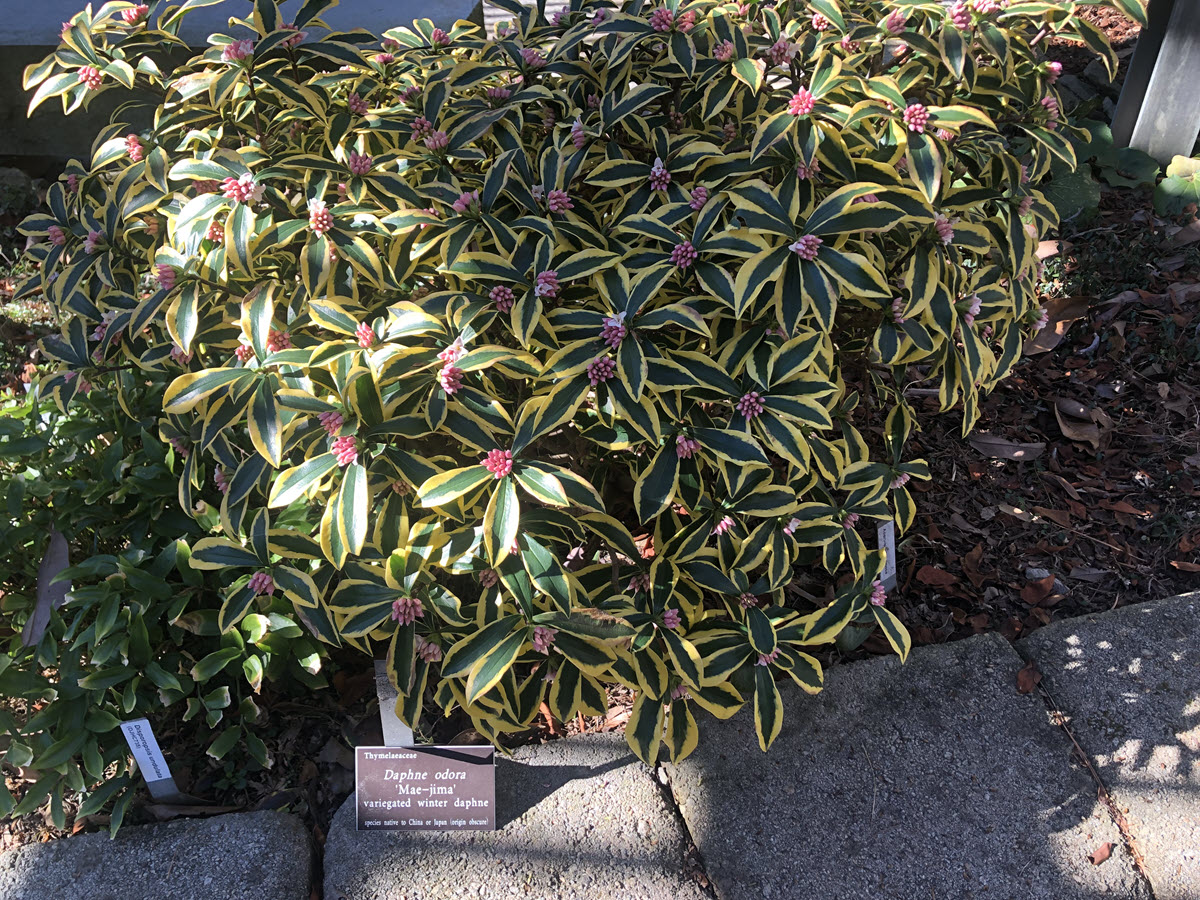
You can enjoy this fragrant Daphne odoro 'Maejima' at JC Raulston Arboretum in Raleigh, NC. It is a highlight of my winter visits to the gardens. Look for it in the Lath House where it is thriving with a little shade and in a raised bed with good drainage.
Winter Daphne
This evergreen shrub is also commonly called fragrant daphne or winter daphne. As a member of the Thymaleaceae plant family, daphne are one of 50 genera and 900 species that share some unusual traits, including shiny, fibrous bark that peels rather than breaks. The flower structures are also unique, and sometimes confusing. Daphne can be difficult to distinguish from its close relative Wikstroemia, which has led some scientists to question the validity of the genera names. One close relative that I highly recommend for southern gardeners is the oriental paper bush, Edgeworthia. Learn more about this fragrant winter bloomer here.
Oddly enough, thyme, the common culinary herb, is NOT a member of the Thymaleaceae plant family. That is instead a part of the much larger Lamiaceae or mint family. Yes, sometimes binomial nomenclature can be quite counter intuitive. Nevertheless, I am fascinated by it!
Since I am going down a nerdy rabbit hole, I may as well explain the origins of the genus name. Daphne is derived from the Roman myth about a naiad nymph associated with freshwater including fountains, well, springs, and streams. Beautiful Daphne became the unwilling object of affection of Olympian god Apollo after Cupid put a spell upon him with an arrow. She prayed to her father Peneus, the river god, for help as Apollo attempted to kiss her. In that moment she was transformed into a laurel tree and the curse on a lovesick Apollo remained.
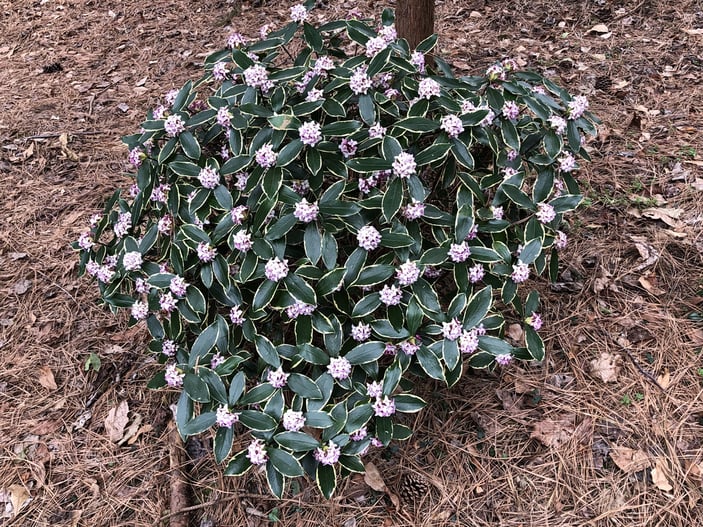
Find a spot in your garden for this evergreen shrub with an attractive mounding shape and enjoy it's sweet scent. Daphne odora 'Aureomarginata' has leaves edged in creamy gold.
Charming but Challenging
Daphne odora just may be the most adored plant of all time for its “fruit loop” fragrance in winter. The scent is unmistakable, and it can cast a spell convincing you to fill your garden with as many specimens as you can find. But, beware, this is not the easiest plant to cultivate.
If you are one of the lucky gardeners who has a living, thriving specimen of daphne, appreciate it! Never take your success for granted. For the rest of us, including myself, who cannot seem to keep this gorgeous plant alive for more than a few months don’t feel bad. In general, daphne is not long lived. They often will thrive for 5 to 10 years and then suddenly, with no warning at all, die overnight. Yes, it is a sad fate that so many gardeners have experienced. But, as I said before, there is something about this plant that keeps us coming back for more. Perhaps there is more to that myth than one may think!
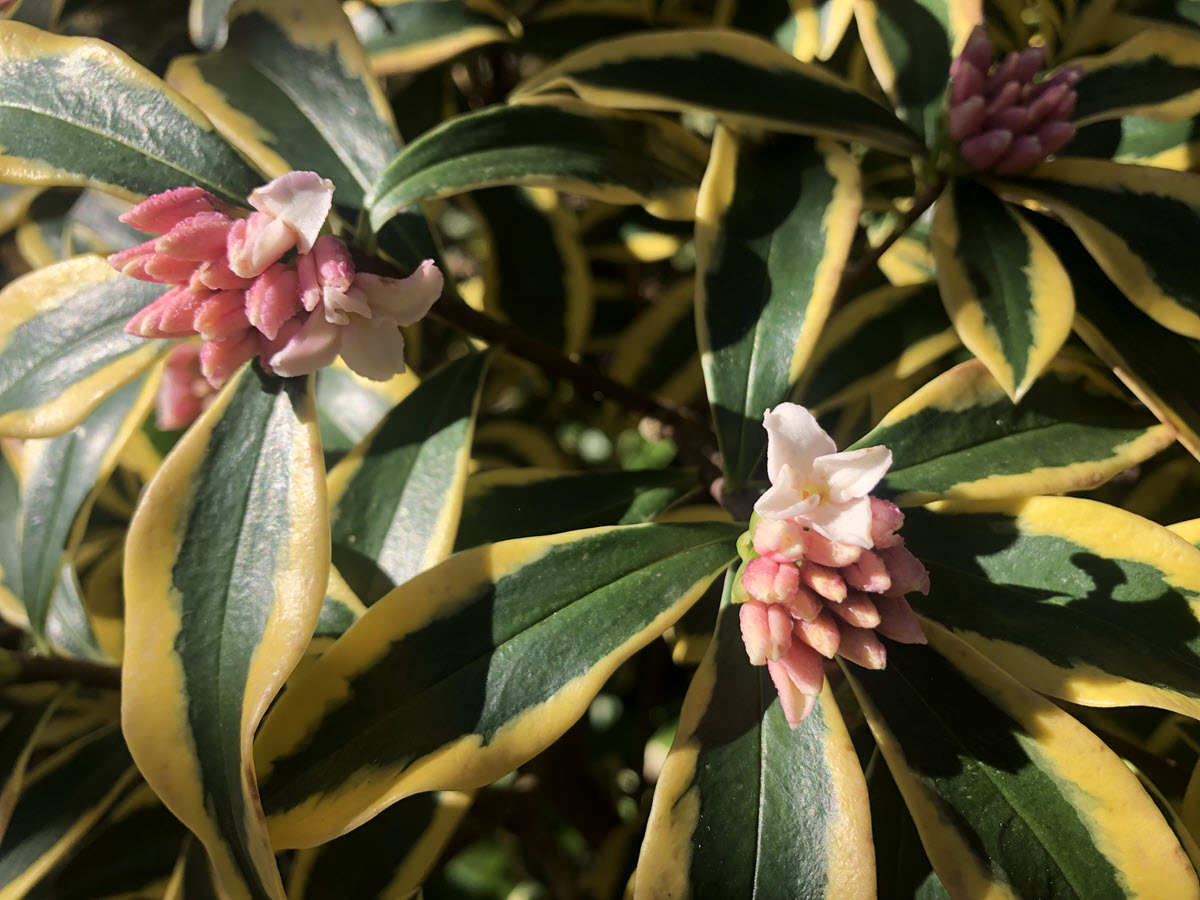
Maejima is a variegated variety of winter daphne with striking foliage. This close up shows the waxy looking leaves and contrasting delicate flowers.
Winter daphne is a broad leaf evergreen that grows in full sun to partial shade. It is hardy in zones 7-9, though I have seen it growing well in colder climates with protected locations. Just remember, the key to success is drainage.
Overall, daphne require very little maintenance. I would caution against heavy pruning. Instead, plant it in an area that can accommodate its overall ten-year size of 3’ x 3’, maybe a little bigger if you are lucky. Save any necessary pruning for the bloom season so you can enjoy the fragrance indoors in an arrangement.
Pro Planting Tips
Daphne do not react well to root disturbance and transplant badly, so when you pick a spot in your garden plan for it to stay there! Unlike most other plants, don't pull the roots apart when planting. Instead, gently remove the pot, drop it in a hole amended with Soil³ compost, and walk away. I am serious! The more you touch the roots, the higher the chance for sudden death syndrome.
Additionally, Daphne odora are highly susceptible to root rot, specifically, Phytophthora which is a fungus-like microorganism that survives as hyphae in the roots of diseased plants and debris. It is easily spread in contaminated potting soil and by splashing or flowing water, like heavy rain or irrigation. To reduce the spread of disease be sure to apply a light layer of mulch or gravel to cover any bare soil.
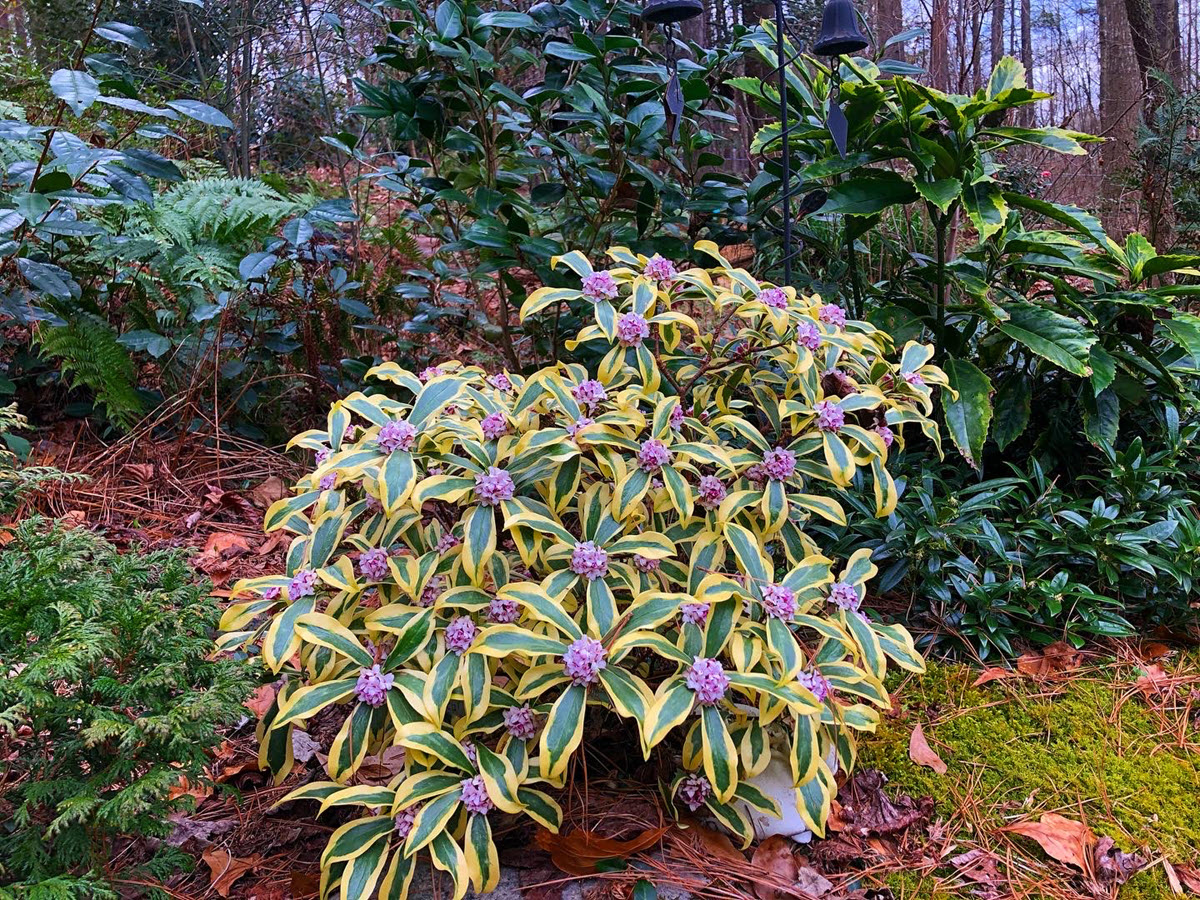
Daphne odora 'Rebecca' is the star of this woodland scene.
Expert Advice on Soil
According to the “experts” Daphne odora grows best in fertile, slightly acidic, well-drained soil. This is often a generic line that describes nearly every plant, so let’s dive into what each of those concepts really means.
- Fertile: Technically this means your soil should contain all the major nutrients for basic plant nutrition, including nitrogen (N), phosphorus (P), and potassium (K). It should also have micronutrients like calcium, magnesium, sulfur, iron, and zinc. This is where Soil³ becomes so important, as this compost provides many of the major and minor nutrients that plants require. In addition to amending your ground with Soil³, I recommend applying a simple, organic slow-release formula every spring to maintain proper fertility.
- Slightly acidic: Most of the southeast has slightly acidic soil naturally, meaning pH levels are lower than 7. If needed, soil pH can be lowered by adding sulfur coated urea, or ground, aged pine bark, often sold as soil conditioner. If you do not know your soil pH, have it tested before you start adding new elements. Adding Soil³ compost won’t have much effect on the pH level of your soil because it is typically in the neutral range of 6.5 to 7.0.
This explains how to conduct a soil test for your lawn, but the process for testing your garden bed soil is very similar.
- Well-drained: This is the most important detail for successfully growing daphne! They really need sharp-draining soil. In addition to amending with Soil³, you may also want to add gravel to your hole to ensure the best drainage possible. Remember, ANY standing water can and will lead to the demise of this beautiful plant.
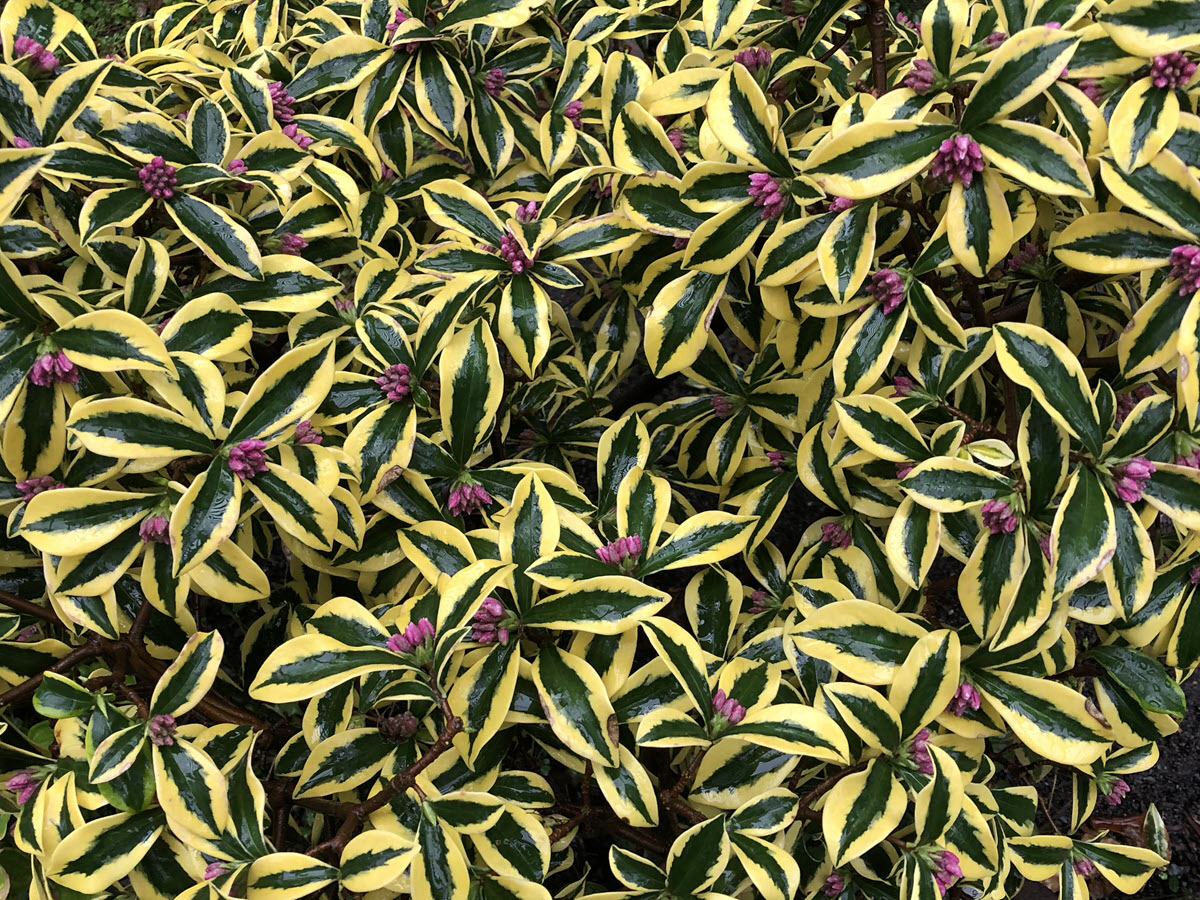
The purplish flower buds on this 'Maejima' daphne will open to reveal paler pink flowers.
Ideal Garden Location
If there were ever a plant to epitomize the “right plant, right place” mantra it is daphne. Sharp drainage is the most important consideration; therefore, daphne is ideal for growing in deciduous woodlands with a slope. They can thrive in heavy soil when excess moisture drains away quickly. I always recommend amending your native ground with Soil³. The addition of this black magic compost will help increase drainage in clay soils while providing all that your daphne will need to thrive.
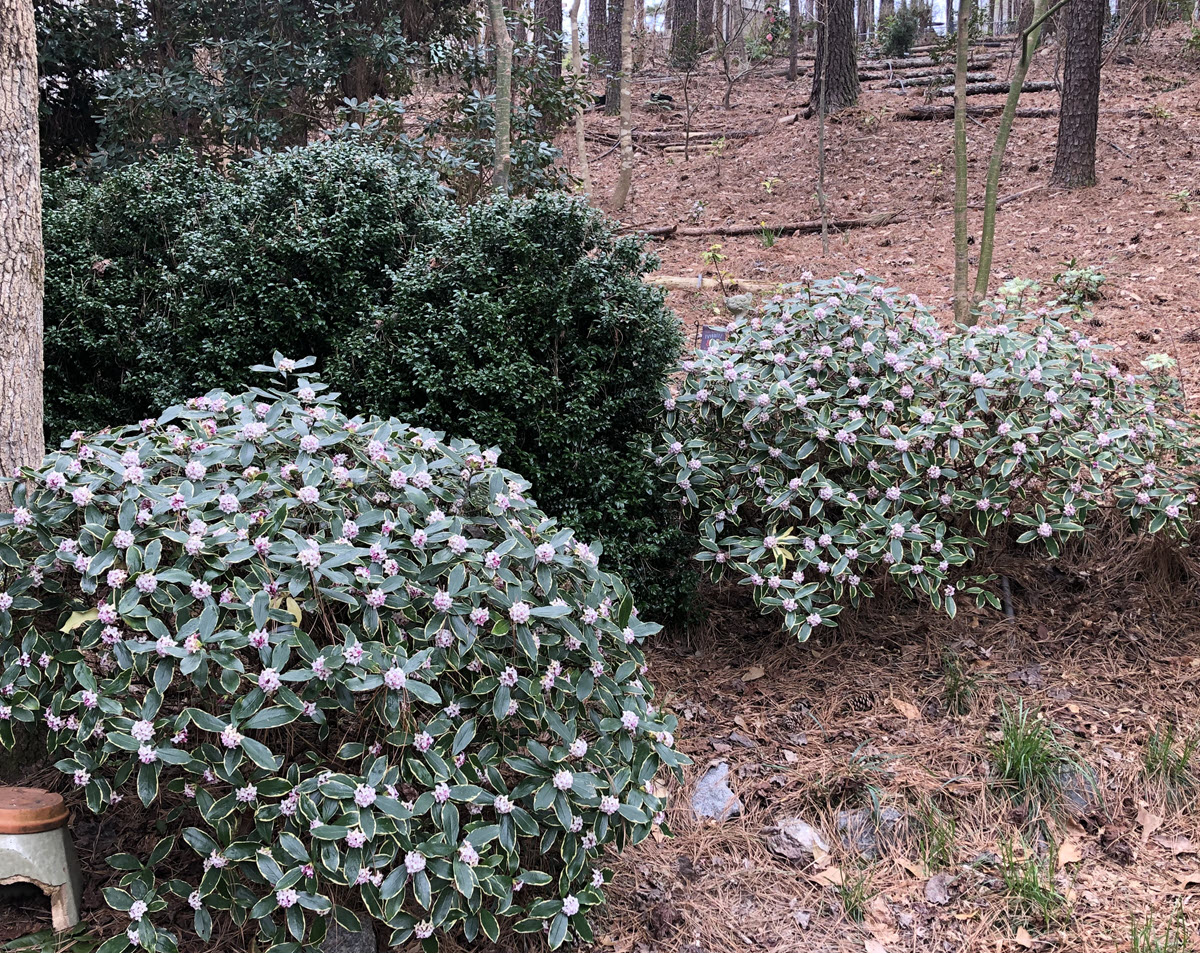
These winter daphne are getting the good drainage they need on a wooded slope.
Some of the happiest daphne that I have witnessed have been in one of two places: under a large oak tree that is absorbing every drop of water, or near a street in full sun growing high and dry. If you have a spot like either of those, daphne just may be a dream come true for you.
Since I live in a low laying, sandy, almost always wet environment, daphne has proven to be a better container plant. Pots offer a great opportunity to grow daphne because you can control the placement and the amount of water the plants receive. Consider growing a daphne under the cover of a roof, like on your front porch. This will ensure it will stay dry even in the heaviest of rainstorms.
Varieties
There is an incredible amount of diversity within the genera Daphne, as there are between 70 and 95 recognized species. This includes deciduous and evergreen forms native to Asia, Europe, and north Africa. Interestingly, there are species that tolerate wet conditions better than the Chinese native D. odora. However, those are rare in the nursery trade and don’t match the fragrance offered by this more commonly sought-after species.
There are many cultivars of Daphne odora to choose from, including brightly variegated selections. A few favorites include:
- ‘Aureomarginata’
- ‘Maejima’
- ‘Nakafu’
- ‘Rebecca’.
I love to visit the JC Raulston Arboretum where they grow daphne very successfully in raised beds in their Lath House. (Look for Daphne odora 'Maejima' at 4:35 minutes into my winter tour video.)
The straight species remains my favorite because it seems to be the easiest to grow. With solid green leaves and white flowers this old fashioned daphne can be difficult to find at nurseries. However, they are commonly found growing at old cemeteries and homesteads.
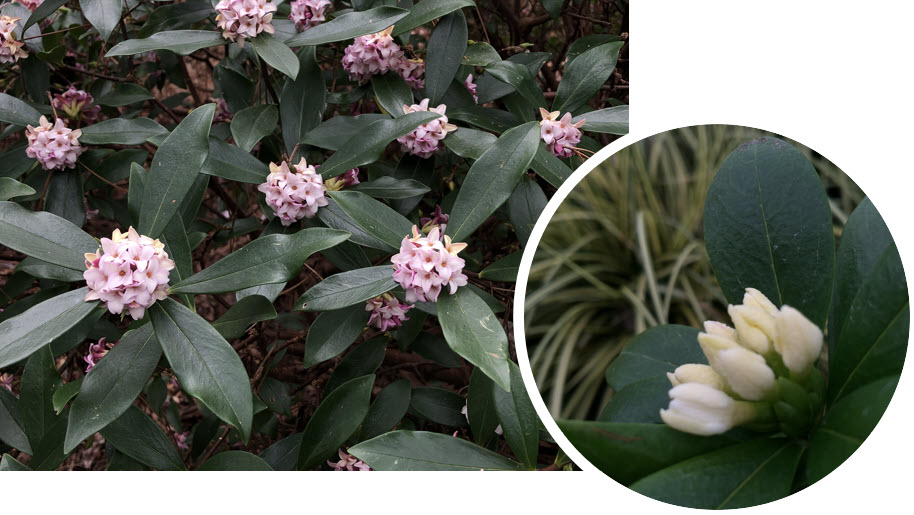
Toxic Beauty
One thing all these varieties have in common is the high severity of poison present in their tissue including the bark, flowers, fruits, leaves, roots, seeds, and stem. Yes, daphne are poisonous to people and animals, which can be a good thing. Before you strike this from your must have list, hear me out… common garden pests, like deer, rabbit, and groundhogs will leave your daphne alone.
When handling this bush, wear gloves and don’t nibble it! In all my years working in the horticulture industry I have never once heard of “death by daphne” in a human or beloved pet. Animals can smell the poison and they instinctually leave the plant alone. Make sure visitors simply enjoy the fragrance and don’t try to taste the plant!
| Botanical Details |
|
Botanical Name: Daphne odora
Common Names: paradise plant, winter daphne, fragrant daphne
Family: Thymelaceae
Hardiness: USDA Zones 7-9
Size: 3’ tall x 3’ wide
Location: Full sun to part shade
Soil: Slightly acidic, moist and well-drained, rich
Bloom Time: January - March depending on variety
Foliage: Evergreen
Flower: Showy, Fragrant
|
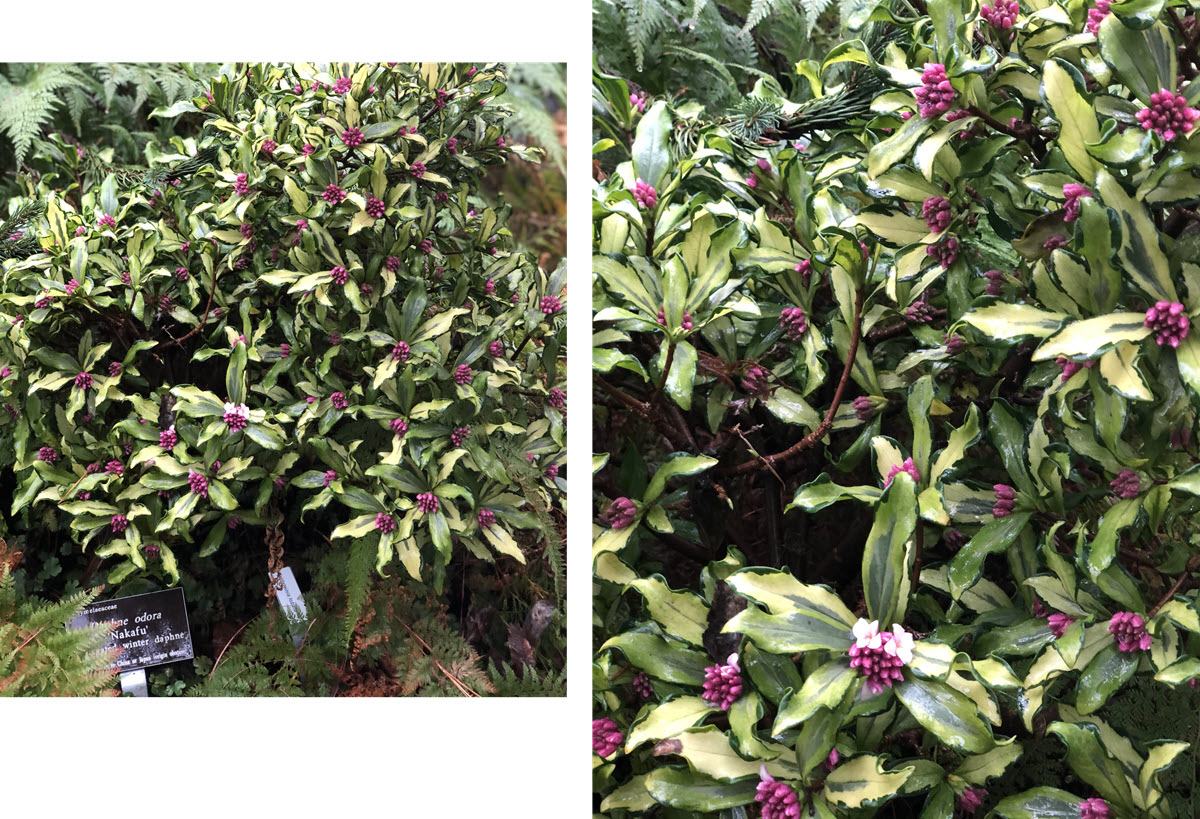
The 'Nakafu' cultivar has interesting variegation with dark green edges to the leaves.
Enjoy
More than anything, I hope these plant profiles will serve as a resource and inspiration. There are so many awesome plants to grow, and I think Daphne odora is one that will bring you great joy, even if it is short lived.
Looking for more plants to make your garden smell amazing all year long? Check out my 20 Must-Have Trees & Shrubs for Fragrance.
Brie
Photos by Brie unless otherwise noted.
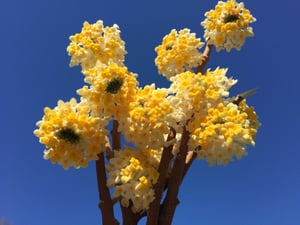
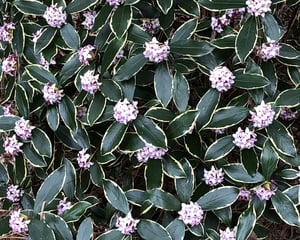

Did this help you out? Have any questions for clarity? Leave a comment below!